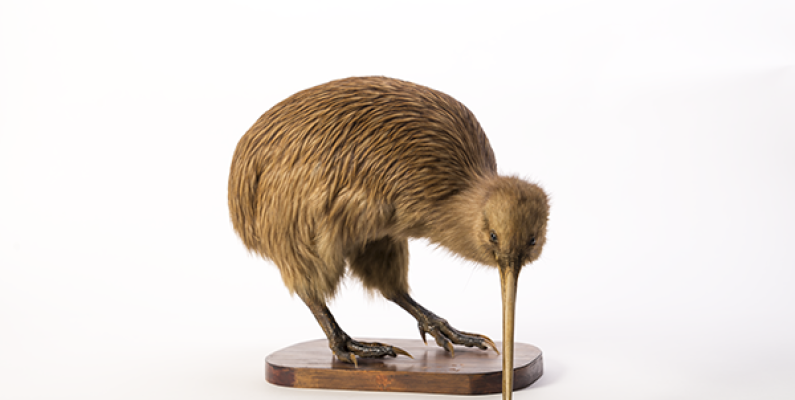
Sex appeal comes in all shapes and forms, as the courtship rituals of the kiwi demonstrate.
Kiwi occasionally call during their night-time excursions to advertise their territory and keep in contact with their partners. However, the male’s main strategy for attracting his mate is to follow her around, grunting. If she’s feeling amorous, mating takes place – sometimes three or more times a night.
The male taps or strokes the female on her back, near the base of her neck. She crouches low, resting her head on the ground, and he climbs onto her back – no easy feat considering he’s lacking wings or a tail to help him balance.
Because the female is the larger bird, mating requires her full cooperation. If she loses interest she may wander away, leaving the male in an undignified heap on the ground.

Image: Dancing kiwi. By Orokonui Ecosanctuary.
A kiwi egg is huge! In proportion to its size, the kiwi lays a bigger egg than almost any other bird. It takes up about 20% of the mother’s body and contains enough yolk that the chick emerges fully feathered and independent. Kiwi seldom have to feed their chicks.
Kiwi sight is poor, so to compensate it uses smell and touch as its main senses. Nostrils at the tip of its long bill coupled with a large olfactory centre in the brain provide an exceptional sense of smell.
The bill also enables the bird to feel vibrations on the ground. Long facial bristles brush against the ground while foraging, forming a sort of detection net. A kiwi spends up to 75% of its nights scratching amongst leaf litter, tree roots and tangles of supplejack. As it walks, it taps the ground ahead with its bill, smelling and feeling for the movement of insects, earthworms and other suitable food.

Image: Dancing kiwi. By Orokonui Ecosanctuary.
est. 1868 is open daily in the Special Exhibitions Gallery, 10am to 5pm, until 14 April 2019. Entry is free.
Dancing kiwi video courtesy of Orokonui Ecosanctuary, check out the full video here.
Top image: Kiwi, tokoeka, Apteryx australis. South Island, New Zealand. Gift of George Malcolm Thomson; Otago Museum Collection. AV5758. By Kane Fleury © Otago Museum.
